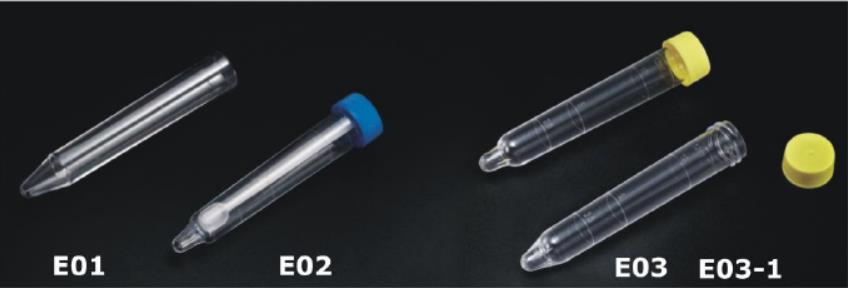Test tubes are quintessential tools in scientific research, enhancing our understanding of the world around us. This article delves into the advancements, significance, and diverse applications of test tubes. We explore their pivotal role in conducting experiments, analyzing samples, and measuring precise quantities. Delve into the different types, materials, and their evolving relevance in various scientific disciplines. Join us as we unravel the importance of test tubes in furthering scientific knowledge and pushing the boundaries of research.

Item NO. | Description | Packing Info. | Qty./case(pc) | Case Size(cm) |
E01 | 12ml Urine Sediment Tube,with Scale | 200pcs/bag*12 | 2400 | 48.5×48.5×34 |
E02 | 10ml Graduated Urine Sediment Tube,with Spoon | 200pcs/bag*10 | 2000 |
Item No | Description | Packing Info. | Qty./Case(pc) | Case Size(cm) |
E03 | 15ml Urine Sediment Tube | 150pcs/bag*12 | 1800 | 56X35X31 |
E03-1 | 10ml Urine Sediment Tube,with lid | 200pcs/bag*10 | 2000 | 48.5×48.5×34 |
Remark:In order to prevent the contamination to the specimen,E03 doesn’t contain mould release agent or any other additives;3400rcf endurable.For dropping liquid easily,there is one flume on the mouth of the Tube.D03 is applicable for pneumatic transmission system. | ||||

Test Tubes, those slender, cylindrical vessels we often associate with scientific experiments, have continually evolved to become indispensable tools in the realm of scientific research. These versatile laboratory instruments play a crucial role in conducting experiments, performing analysis, and measuring precise quantities. Let us delve into the various advancements and the significance of Test Tubes in advancing our knowledge and discoveries.
Evolutionary Advancements:
Test tubes have come a long way from their simple glass origins. Today, they are available in a variety of types and materials, including glass, borosilicate glass, and plastic. Glass test tubes offer transparency and chemical resistance, while plastic ones provide convenience and disposability. Additionally, specialized features like graduated markings and screw caps further enhance their functionality, enabling efficient experiments and accurate measurements.
Versatility in Experimentation:
Test tubes find extensive application in a wide range of scientific disciplines, such as chemistry, biology, and physics. They are used to mix substances, observe reactions, and facilitate various analytical techniques. Test tubes are also instrumental in culturing microorganisms, analyzing DNA and proteins, and synthesizing compounds. Their standardized sizes and compatibility with other laboratory equipment make them indispensable tools for researchers across different scientific fields.
Precise Measurements and Analysis:
One of the key functions of test tubes is to enable precise measurements. Their graduated markings allow scientists to accurately measure volumes of liquids, making them essential for titrations, dilutions, and preparing samples. Moreover, test tubes provide a controlled environment for scientific analysis, such as observing color changes, reactions, and precipitation.
Safety and Handling:
Proper handling and safety precautions are vital when working with test tubes. Scientists must use caution to avoid accidents, such as breakages or exposure to hazardous substances. Securely holding test tubes, utilizing test tube racks and holders, and wearing protective clothing are essential practices to ensure safety in the laboratory.
Future Innovations:
As scientific research continues to advance, test tubes are poised to undergo further innovations. Materials engineering and technological advancements in design will likely improve their functionality and versatility. For instance, there is a growing demand for sterile, disposable plastic test tubes to minimize the risk of contamination, streamline processes, and promote convenience.
In conclusion, test tubes have significantly contributed to scientific research, serving as indispensable instruments for experimentation, analysis, and precise measurements. Their evolutionary advancements, versatility, and compatibility with various scientific disciplines make them crucial tools in laboratories worldwide. As research continues to push boundaries, test tubes will undoubtedly evolve further to meet the ever-changing needs of scientists and researchers.
Contact: Neo
Phone: 008615867460640
E-mail: Info@Hwtai.com
Whatsapp:008615867460640
Add: Building 2, Xinmao Qilu Science Technology Industrial Park, Tianqiao District, Jinan City, Shandong Province,China.
We chat
